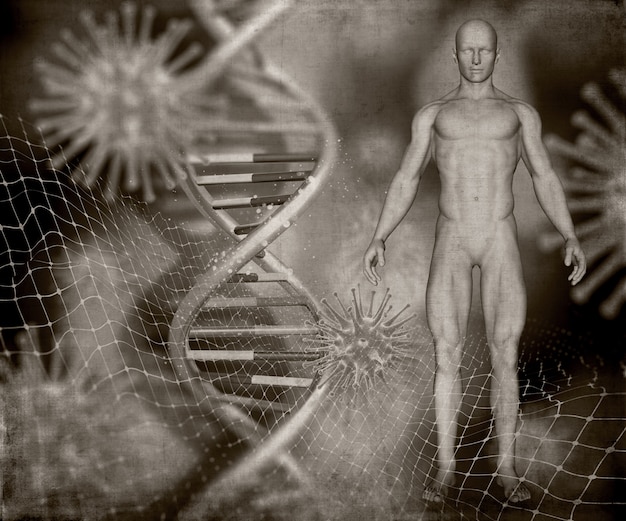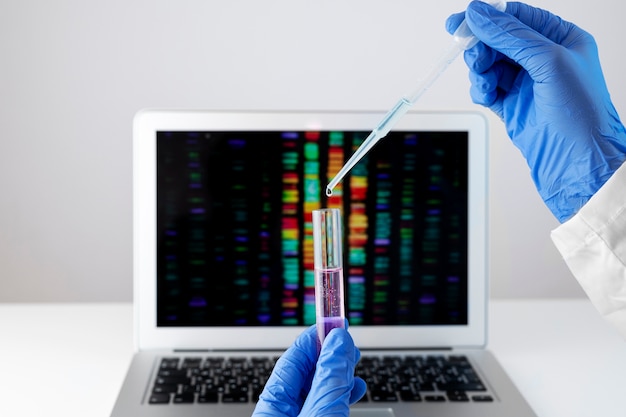Gout, a painful form of inflammatory arthritis, affects millions of people worldwide. Characterized by sudden and severe joint pain—often in the big toe—it results from the buildup of uric acid crystals in the joints. While current treatments focus on managing symptoms and lowering uric acid levels, a groundbreaking new approach may offer a potential long-term solution by tapping into our evolutionary past—and the power of CRISPR gene editing.
Millions of years ago, human ancestors lost a gene called URC1, which played a key role in breaking down uric acid. This gene was functional in most mammals, allowing them to metabolize uric acid efficiently. However, during human evolution, this gene became non-functional due to mutations—a loss that may have once provided a survival advantage by helping early humans store fat during times of food scarcity.
Today, this evolutionary trade-off may contribute to the high prevalence of gout in modern populations. Without the ability to break down uric acid effectively, humans are more prone to hyperuricemia—a condition where uric acid levels in the blood become too high, leading to crystal formation and painful flare-ups.

Researchers have now turned to CRISPR gene-editing technology to explore whether restoring the function of this long-lost gene could offer a novel treatment for gout. By using insights from evolutionary genetics, scientists identified the remnants of the URC1 gene in the human genome and designed CRISPR-based tools to potentially reactivate or replace its function.
In preclinical studies, researchers tested this approach in cell cultures and animal models. Using CRISPR-Cas9, they introduced functional versions of the gene or edited regulatory regions to mimic the activity seen in species that naturally express URC1. Early results showed a significant reduction in uric acid levels, suggesting that this method could effectively address the root cause of gout, rather than just managing symptoms.
Current gout treatments include medications like allopurinol and febuxostat, which inhibit uric acid production, or drugs that improve its excretion. While effective for many, these treatments require lifelong use and can have side effects. Some patients also fail to reach target uric acid levels despite medication.
The CRISPR-based strategy represents a paradigm shift—aiming for a one-time, potentially curative intervention. By restoring a biological function lost through evolution, this treatment could provide lasting protection against gout, reducing or even eliminating the need for daily medication.

Despite its promise, this approach is still in the early stages. The treatment has not yet been tested in humans, and several hurdles remain. Ensuring the precision and safety of gene editing is critical—off-target effects could lead to unintended mutations. Additionally, delivering the CRISPR system to the right cells in the liver (where uric acid metabolism primarily occurs) remains a technical challenge.
There are also broader ethical questions about editing the human genome, even for therapeutic purposes. While somatic (non-reproductive) cell editing is less controversial than germline editing, long-term monitoring would be essential to assess safety and efficacy.
Researchers are now refining the delivery methods—using viral vectors or lipid nanoparticles—to target liver cells efficiently. Preclinical trials are ongoing to evaluate durability, immune response, and long-term outcomes. If successful, human clinical trials could begin within the next few years.
This work also opens the door to exploring other 'lost' genes that may play roles in modern diseases. From metabolic disorders to cardiovascular conditions, evolutionary genetics could provide new therapeutic targets previously overlooked.
The convergence of evolutionary biology and cutting-edge gene editing is paving the way for innovative treatments that go beyond symptom management. By learning from our genetic past, scientists are developing tools to correct deep-rooted biological vulnerabilities.
While the CRISPR-based gout treatment is not yet ready for human use, it represents a bold step toward precision medicine—where therapies are tailored to our unique genetic makeup, informed by millions of years of evolution.
As research progresses, patients with gout and other genetic conditions may one day benefit from treatments that don’t just manage disease, but fundamentally transform how our bodies function.

Health

Health

Health

Health

Health

Fitness

Health

Health